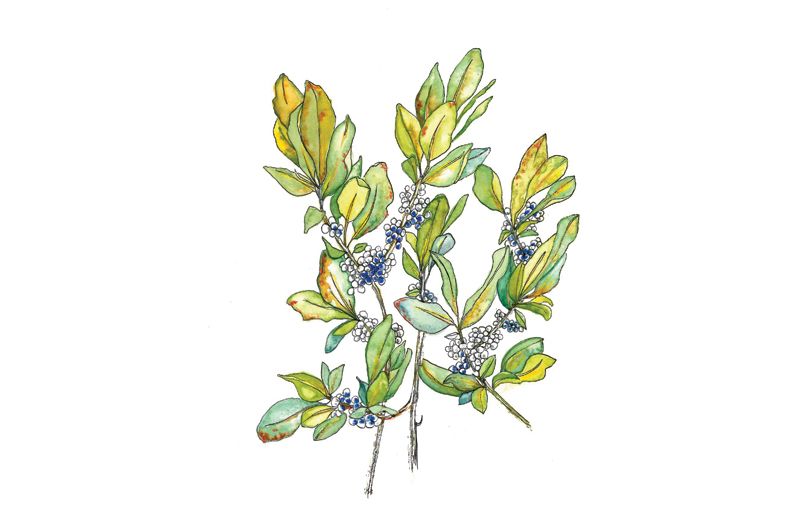Colonial Americans used to boil bayberries to produce wax, which they turned into fragrant, clean-burning candles. Considered too nice for everyday use and too difficult to source, they were often reserved for New Year festivities and special occasions, and were thought to bring prosperity and health to the home. Bayberries were also used to scent soaps. The plant isn’t just ornamental, though: at various times it’s been used to flavor teas and cordials. Today bayberry leaf is commonly used as an herb, enjoyed in much the same way as bay leaf, its more popular cousin.
Where to look: The salt-tolerant shrubs can be found growing on dunes, in coastal woodlands, and along ponds in sandy soil. Look for long oval leaves and small blue-gray fruit that are covered with a waxy white coating. (Both the fruit and some of the leaves remain on the plant through the winter.) When rubbed between your fingers, the leaves give off a slightly peppery smell.
How to use: Dry or fresh leaves can be added to soups, chicken, and marinades. The herb is typically removed before serving.
“This bayberry candle comes from a friend / so on Christmas Eve burn it down to the end. / For a bayberry candle burned to the socket, / will bring joy to the heart and gold to the pocket.”
– Traditional







